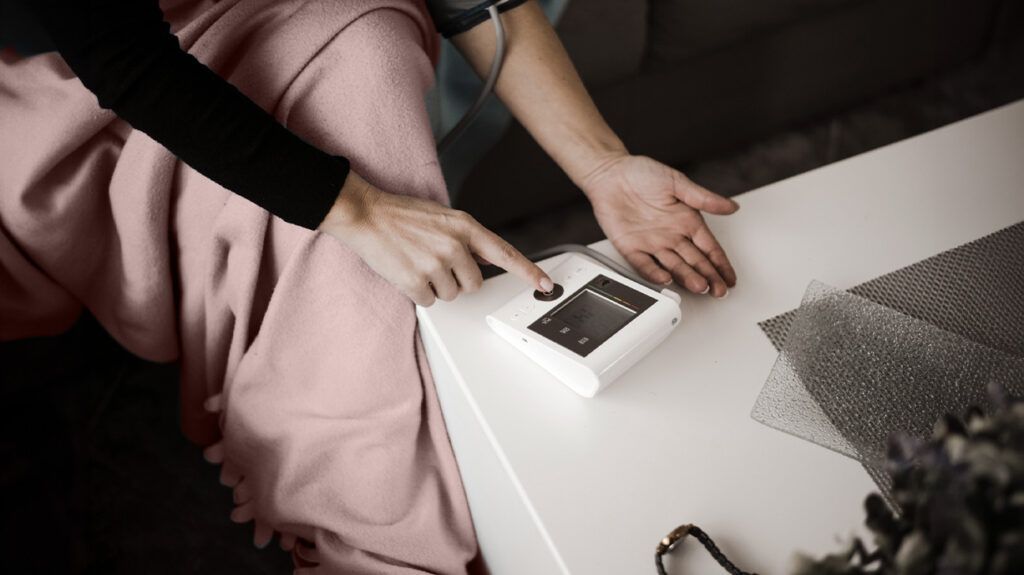Blood pressure levels can vary between individuals, but the American Heart Association (AHA) recommends a target blood pressure below 120 mm Hg systolic and 80 mm Hg diastolic.
According to the
Hypotension, or low blood pressure, occurs when blood pressure is too low. The AHA defines this as 90/60 mm Hg.
However, blood pressure can become dangerously high, and it can also get too low.
This article discusses what blood pressure is, how to measure it, and what the measurements mean for health.

Since 2017, the AHA has advised that people seek treatment when their blood pressure measures 130/80 mm Hg.
There are four categories of high blood pressure, which doctors classify as elevated, hypertension stage 1, hypertension stage 2, and hypertensive crisis.
Blood pressure chart
| Category | Systolic | and/or | Diastolic |
|---|---|---|---|
| Expected | < 120 mm Hg | and | < 80 mm Hg |
| Elevated (at risk, or prehypertension) | 120-129 mm Hg | and | < 80 mm Hg |
| Hypertension stage 1 | 130-139 mm Hg | or | 80-89 mm Hg |
| Hypertension stage 2 | > 140 mm Hg | or | > 90 mm Hg |
| Hypertensive crisis (emergency situation) | > 180 mm Hg | and/or | > 120 mm Hg |
The AHA also advises that doctors should prescribe blood pressure-lowering medication to people who have had a previous heart attack or stroke or to those at risk for these conditions. Risk factors include age, a diabetes diagnosis, or chronic kidney disease.
Treatment at the earlier stages of high blood pressure mainly involves making certain lifestyle changes.
Blood pressure is the force that moves blood through the circulatory system. It is an important force because it allows the blood, which contains oxygen and nutrients, to travel around the body to nourish tissues and organs.
Blood also carries white blood cells and antibodies, which the body needs for immunity processes, and hormones such as insulin. It also carries the clotting platelets that prevent blood loss following injury.
Blood also collects the toxic waste products of metabolism, including carbon dioxide inhaled from daily breathing, and delivers it to the liver and kidneys for excretion.
The heart helps create blood pressure by forcing out blood when it contracts with every heartbeat. Blood pressure, however, is not solely created by a pumping heart.
Circulation is similar to a highly sophisticated form of plumbing — blood flows through arteries like water flows through a garden hose pipe.
Blood flows through the body because of a difference in pressure.
Blood pressure is highest at the start of its journey from the heart — when it enters the aorta — and it is lowest at the end of its journey along smaller branches of arteries. That pressure difference is what causes blood to flow.
Arteries affect blood pressure in a similar way to the physical properties of a garden hose pipe, affecting water pressure. Constricting the pipe increases pressure at the point of constriction.
Without the elastic nature of the artery walls, for example, the pressure of the blood would fall away more quickly during pumping from the heart.
While the heart creates the maximum pressure, the properties of the arteries maintain this pressure, allowing blood to flow throughout the body.
The condition of the arteries affects blood pressure and flow, and narrowing of the arteries can eventually block the supply altogether, leading to dangerous conditions, including stroke and heart attack.
The device used to measure blood pressure is a sphygmomanometer. It comprises a rubber armband and a cuff inflated by hand or machine pump.
Once the cuff inflates enough to stop the pulse, it gives a reading either electronically or on an analog dial.
The reading records the pressure exerted to move mercury around a tube against gravity. This is why blood pressure measurements use the unit millimeters of mercury (mm Hg).
Typically, measuring blood pressure does not cause any pain or discomfort. However, a person may feel a temporary sensation of tightness around the arm where the cuff inflates.
Blood pressure readings
Blood pressure readings consist of two figures: The systolic pressure is the first, or top number, and the diastolic pressure is the second, or bottom number. It will read, for example, as 140/90 mm Hg.
The systolic pressure is the higher figure caused by the heart’s contraction, while the diastolic number is the lower pressure in the arteries during the brief resting period between heartbeats.
The
- maintaining a moderate body weight based on a doctor’s recommendation
- eating a balanced diet rich in fruits and vegetables
- cutting down on sodium, or salt, in the diet
- engaging in regular physical activity, such as brisk walking, for at least 30 minutes daily, as often as possible.
- managing stress where possible
- quitting smoking if appropriate
- working with a doctor to manage all prescriptions properly
Drinking too much alcohol can also cause high blood pressure.
Taking these steps can reduce the risk of future health problems.
Low blood pressure, or hypotension, does not typically cause as much concern as high blood pressure, but it can still indicate health issues.
A person with a blood pressure reading of less than
Low blood pressure can also occur due to underlying health issues, such as:
- internal bleeding
- heart disease
- pregnancy
- dehydration
- nutrient deficiencies
- some medications
If someone experiences other symptoms, speak with a doctor to address any underlying conditions.
Learn more about the causes and treatment of low blood pressure.
Blood pressure is essential to the body. However, it can become too high (hypertension) or too low(hypotension).
High blood pressure can cause several health issues that a doctor may monitor.
A person can manage high blood pressure, especially with early intervention and some lifestyle adjustments.
